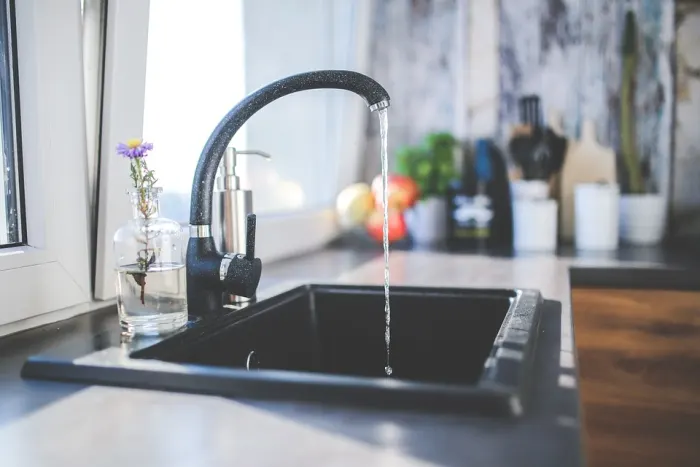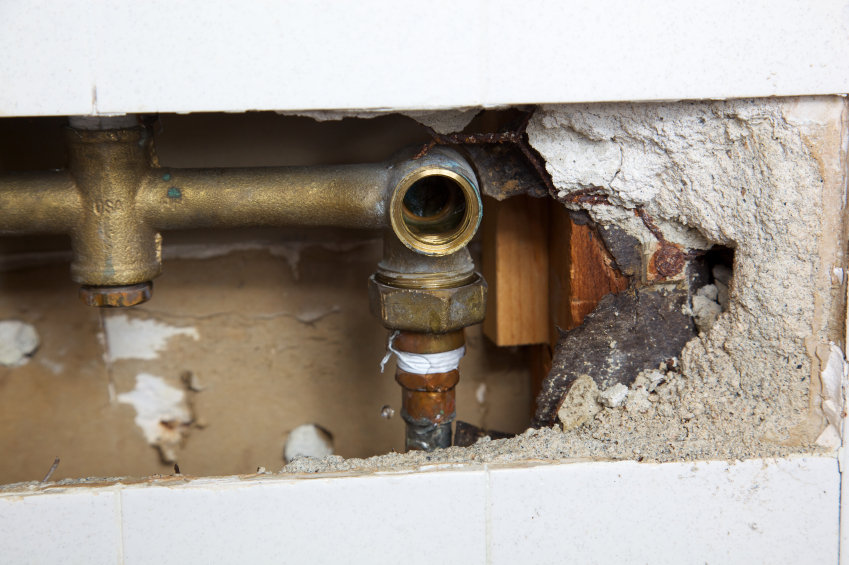Plumbing Noises You Must Know About
Plumbing Noises You Must Know About
Blog Article
Everyone will have their personal opinion involving Why Do My Pipes Make Noises.

To diagnose noisy plumbing, it is very important to determine first whether the undesirable noises happen on the system's inlet side-in various other words, when water is turned on-or on the drain side. Noises on the inlet side have actually differed reasons: excessive water pressure, worn shutoff and also faucet parts, incorrectly linked pumps or various other devices, incorrectly placed pipeline fasteners, and plumbing runs including a lot of limited bends or other limitations. Sounds on the drainpipe side generally originate from poor location or, as with some inlet side noise, a design consisting of limited bends.
Hissing
Hissing sound that takes place when a tap is opened a little generally signals excessive water pressure. Consult your local water company if you believe this trouble; it will certainly have the ability to inform you the water stress in your area as well as can set up a pressurereducing valve on the incoming water system pipe if needed.
Various Other Inlet Side Noises
Squeaking, squeaking, scratching, breaking, and also tapping typically are caused by the expansion or tightening of pipes, generally copper ones supplying warm water. The noises happen as the pipes slide versus loosened fasteners or strike neighboring home framing. You can often determine the area of the issue if the pipes are revealed; just follow the audio when the pipelines are making sounds. Probably you will discover a loose pipeline hanger or a location where pipelines exist so near flooring joists or various other framing items that they clatter versus them. Affixing foam pipe insulation around the pipes at the point of call must remedy the trouble. Make sure straps and hangers are safe and secure as well as offer sufficient support. Where feasible, pipe fasteners ought to be attached to large structural components such as foundation walls rather than to framing; doing so lessens the transmission of resonances from plumbing to surfaces that can intensify and move them. If connecting bolts to framing is inescapable, cover pipelines with insulation or other resistant material where they contact bolts, as well as sandwich completions of new bolts between rubber washing machines when installing them.
Dealing with plumbing runs that suffer from flow-restricting limited or numerous bends is a last hope that needs to be carried out just after consulting a proficient plumbing contractor. Sadly, this scenario is fairly typical in older homes that might not have been constructed with indoor plumbing or that have actually seen several remodels, specifically by amateurs.
Chattering or Shrilling
Intense chattering or shrieking that occurs when a valve or tap is activated, and that normally goes away when the installation is opened totally, signals loose or faulty inner components. The solution is to replace the valve or tap with a brand-new one.
Pumps and appliances such as cleaning equipments and dishwashers can move electric motor noise to pipelines if they are poorly connected. Link such products to plumbing with plastic or rubber hoses-never inflexible pipe-to isolate them.
Drain Noise
On the drain side of plumbing, the principal goals are to eliminate surfaces that can be struck by dropping or hurrying water and also to insulate pipes to include inevitable noises.
In brand-new building and construction, bathtubs, shower stalls, toilets, as well as wallmounted sinks as well as containers should be set on or against durable underlayments to minimize the transmission of audio via them. Water-saving bathrooms and also taps are less noisy than standard models; install them rather than older kinds even if codes in your location still permit using older fixtures.
Drains that do not run up and down to the cellar or that branch right into horizontal pipe runs supported at flooring joists or various other mounting present especially bothersome sound problems. Such pipelines are large enough to radiate considerable vibration; they also carry significant amounts of water, that makes the scenario even worse. In brand-new building and construction, specify cast-iron soil pipes (the big pipes that drain bathrooms) if you can manage them. Their enormity consists of much of the noise made by water going through them. Likewise, prevent routing drains in wall surfaces shown bedrooms and rooms where individuals collect. Wall surfaces including drainpipes should be soundproofed as was defined previously, using double panels of sound-insulating fiberboard and wallboard. Pipelines themselves can be covered with unique fiberglass insulation created the objective; such pipes have a resistant plastic skin (occasionally consisting of lead). Results are not always adequate.
Thudding
Thudding sound, typically accompanied by trembling pipes, when a faucet or appliance shutoff is switched off is a problem called water hammer. The noise and vibration are brought on by the resounding wave of stress in the water, which all of a sudden has no place to go. Sometimes opening up a valve that releases water promptly right into a section of piping containing a restriction, joint, or tee installation can produce the exact same condition.
Water hammer can usually be healed by mounting fittings called air chambers or shock absorbers in the plumbing to which the problem shutoffs or taps are connected. These devices permit the shock wave produced by the halted flow of water to dissipate airborne they consist of, which (unlike water) is compressible.
Older plumbing systems might have brief vertical sections of capped pipe behind wall surfaces on tap runs for the very same function; these can eventually loaded with water, minimizing or destroying their efficiency. The cure is to drain pipes the water system completely by shutting down the main water shutoff and opening up all faucets. After that open the major supply valve as well as close the taps one at a time, beginning with the faucet nearest the shutoff as well as finishing with the one farthest away.
WHY IS MY PLUMBING MAKING SO MUCH NOISE?
This noise indeed sounds like someone is banging a hammer against your pipes! It happens when a faucet is opened, allowed to run for a bit, then quickly shut — causing the rushing water to slam against the shut-off valve.
To remedy this, you’ll need to check and refill your air chamber. Air chambers are filled with — you guessed it — air and help absorb the shock of moving water (that comes to a sudden stop). Over time, these chambers can fill with water, making them less effective.
You’ll want to turn off your home’s water supply, then open ALL faucets (from the bathroom sink to outdoor hose bib) to drain your pipes. Then, turn the water back on and hopefully the noise stops! If you’re still hearing the sound, give us a call to examine further.
Whistles
Whistling sounds can be frustrating, as sometimes the source isn’t easily identified. However, if you can pinpoint which faucet or valve that may be the cause, you’ll likely encounter a worn gasket or washer — an easy fix if you replace the worn parts!Whistling sounds from elsewhere can mean a number of things — from high water pressure to mineral deposits. Your best plan of attack here is to give our plumbing experts a call. We’ll be able to determine where the noise is coming from and what the cause may be, then recommend an effective fix!
Cracks or Ticks
Cracking or ticking typically comes from hot water going through cold, copper pipes. This causes the copper to expand resulting in a cracking or ticking sound. Once the pipes stop expanding, the noise should stop as well.
Pro tip: you may want to lower the temperature of your water heater to see if that helps lessen the sound, or wrapping the pipe in insulation can also help muffle the noise.
Bangs
Bangs typically come from water pressure that’s too high. To test for high water pressure, get a pressure gauge and attach it to your faucet. Water pressure should be no higher than 80 psi (pounds per square inch) and also no lower than 40 psi. If you find a number greater than 80 psi, then you’ve found your problem!
Next step is to give us a call in order to install a pressure regulator. Trust us, you don’t want to wait to resolve this issue. Not only is the sound annoying, but high water pressure can be destructive to your home — including damaging certain appliances, like your washer and dishwasher.
Dripping
You might be accustom to the slow quiet drip your kitchen faucet makes. You might have even tuned out your bathroom sink dripping and drabbing all day long — but it’s time to find its cause.
A slow drip could signify a variety of easy to fix issues, such as a worn out O ring, or loose part. And by ignoring the drip, you could be wasting up to 2,000 gallons of water a year! So start conserving water — get it looked at ASAP.
https://www.pwessig.com/blog/2018/december/why-is-my-plumbing-making-so-much-noise-/

As a devoted person who reads on How To Fix Noisy Pipes, I figured sharing that chunk was worthwhile. Do you know another individual who is inquisitive about the niche? Take a moment to share it. Thank you so much for your time invested reading it.
Schedule Today Report this page